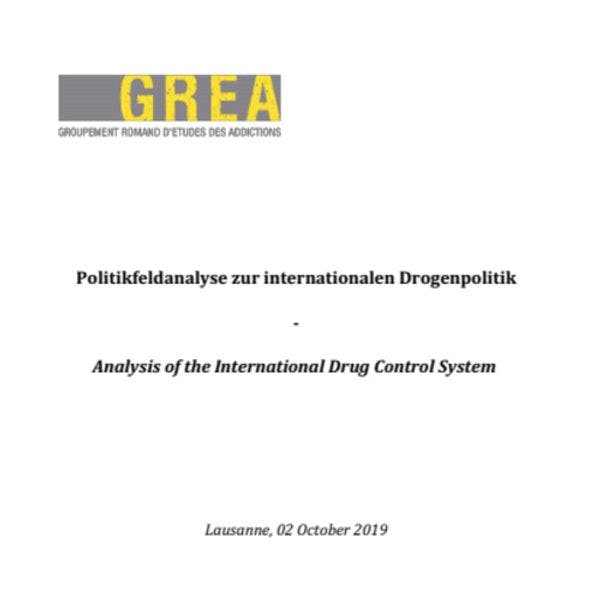GREA
Analysis of the international drug control system
Switzerland’s current drug policy, founded on the 4 pillars, dates from the 1990s. In hindsight, it can be considered a success. Nevertheless, things have changed since then. Countries have adopted new legal frameworks and it is time for Switzerland to draw up a state of affairs report and to outline the drug policy that it wishes to promote and lead in the next ten years. The basis for this report lies in the request of the author of the Postulate (‘Postulat Rechsteiner’), to the Swiss government to draw up a state of affairs review of the country’s drug policy, taking into account the current developments at the national and international levels.
This report focuses on the developments that have taken place internationally and presents the current state of affairs regarding a certain number of countries’ drug policies, according to specific indicators. It complements the reports that the Federal Commission on Questions related to Addiction (CFLA) is producing on the adequacy of the Drug Law (LStup; RS812.121) and the relevant decrees, in light of scientific and social development of the past 10 years. Ultimately, this report will form part of the material which the Federal Council will rely upon to produce a report to Parliament by the end of 2019 on the perspectives of the Swiss drug policy for the next ten years.
The first question that needs to be addressed when examining the developments of the international drug control system is what exactly the international drug control system is. For the purposes of this paper, it is considered to mean the international bodies, mandated to specifically examine drug-related questions: the UN Office on Drugs and Crime (UNODC); the Commission on Narcotic Drugs (CND); and the International Narcotics Control Board (INCB). However, these bodies are not the only ones acting in the field of drugs in the international arena, as will be seen throughout this study. Other (health, human rights and other actors) are starting to address drug-related questions more closely, from their respective points of view.
Nevertheless, UNODC, INCB and CND remain the entities that are consistently referred to when discussing the international drug control regime. In fact, the three Drug Control Conventions (1961, 1971 and 1988) are considered the cornerstone of the international drug control system (Bewley-Taylor and Jelsma, 2012). Naturally, the system wouldn’t exist without State governments interacting with the international drug control system so they can also be considered part of the wider system.
